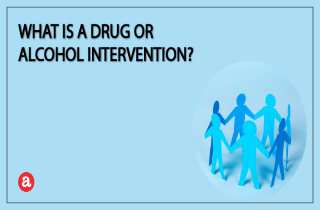Drug or alcohol intervention definition
The intervention process involves a group of individuals who are ready to confront an addicted person in an effort to persuade them to seek professional help for their substance abuse. This group of individuals is usually made up of an addict’s loved ones, and may include family members, close friends, and even colleagues.
However, the best strategies for drug or alcohol intervention are those that are carefully planned. A mental health professional, such as a licensed addiction counselor, will usually consult with the group and may also help plan and execute the intervention. These “interventionists”, or intervention specialists, can help guide a drug or alcohol intervention and remain in an objective role of advisor during the process.
Drug or alcohol intervention goals
A drug or alcohol intervention is mainly used as a method to confront an addict about his or her substance abuse. The main drug or alcohol intervention goals are to make the addict realize that they have a problem and to persuade them to seek treatment. In order to do this, the group confronting the addict must be loving, yet firm. An experienced addiction specialist can be an invaluable asset during an intervention, since they are able to keep the meeting on track and focused.
What happens during a drug or alcohol intervention?
An intervention should be a carefully planned event in order to be successful. The group of confronting individuals should meet with each other and an addiction specialist to discuss how they want the intervention to go and what they will say to an addict. We’ve prepared a list of the case scenarios that you can expect from an intervention. While not all interventions will be exactly the same, most of them will follow the same basic steps.
- An addict is caught by surprise with the intervention, which gives them little time to develop excuses for their drug or alcohol abuse.
- The addict is convinced to simply sit and listen to the group.
- Each member of the group establishes that they care for the addict and only have his or her best interests at heart.
- Members of the group attempt to make the addict realize that his or her substance abuse is out of control by individually confronting them with specific examples.
- An ultimatum is imposed – either the addict seeks treatment or the group immediately sets new boundaries regarding the addict and his or her substance abuse.
What happens after a drug or alcohol intervention?
If a drug or alcohol intervention has gone well, an addict will be willing to go into a substance abuse treatment program. Doctors and mental health professionals are often a good starting place in order to get an assessment, since they can evaluate addicts and refer them to a suitable treatment program. A drug or alcohol addiction treatment program usually consists of individual counseling, group therapy, and family counseling. But the basic options for treatment are: inpatient or outpatient rehab.
In some cases, an addict will still refuse treatment after a drug or alcohol intervention. If this happens, their loved ones must accept that they may not be able to force the addict into treatment. They can, however, enforce some tough love tactics and consequences. In short, they can remove their support of the addict until he or she is ready to seek help. They can remove financial support for example, or even refuse to include them in family activities until they seek help.
Even if an addict refuses to seek help, it’s often a good idea for their loved ones to go into counseling or therapy themselves. This can include individual or family therapy, or even a support group for loved ones of addicts. Loved ones of an addict who better able to understand the addiction are typically better equipped to deal with it.
An alternative to confrontational interventions
The Community Reinforcement and Family Training (CRAFT) model has been created to address low success rates in treatment for people who are basically “strong armed” into rehab. Experts have found that when you increase family compliance with an intervention, you increase the rate of engagement of addicts in treatment. How does it work?
CRAFT helps you change the way you think about your situation and teaches you how to help your loved one learn to enjoy a sober lifestyle. Over the period of many weeks (preferrably with the help of a licensed family psychologist), you rethink your own lifestyle to make it safer and saner. You do this regardless of what your loved one does. OVer time, the system of offering and withdrawing “rewards” (such as your affection and attention) hopefully leads to your loved one seeking addiction treatment. Along the way, you learn about about:
- communication skills
- contingency management
- functional analysis
- life enrichment skills
- motivational training
- safety
- life enrichment skills
Drug or alcohol intervention questions
Still have questions about preparing or participating in a drug or alcohol intervention? Please ask us below. We do our best to respond to all questions personally and promptly.









Related Posts